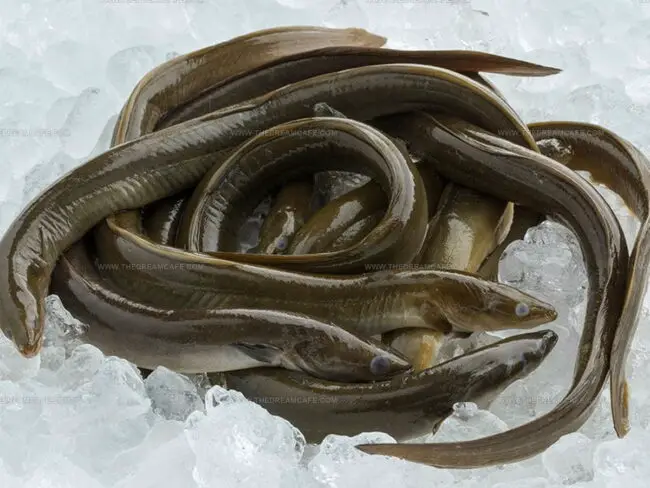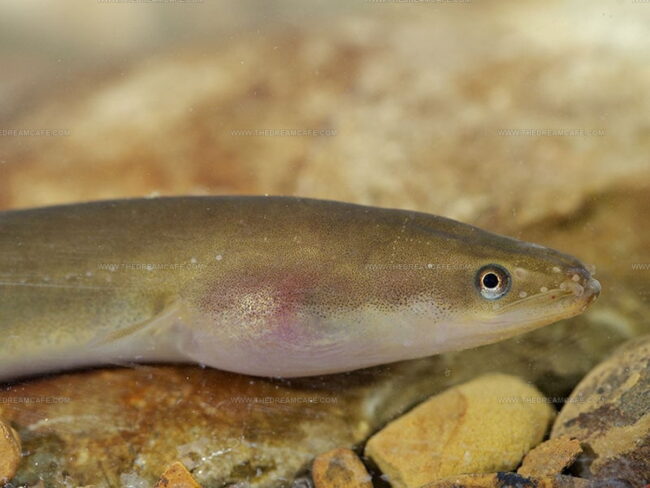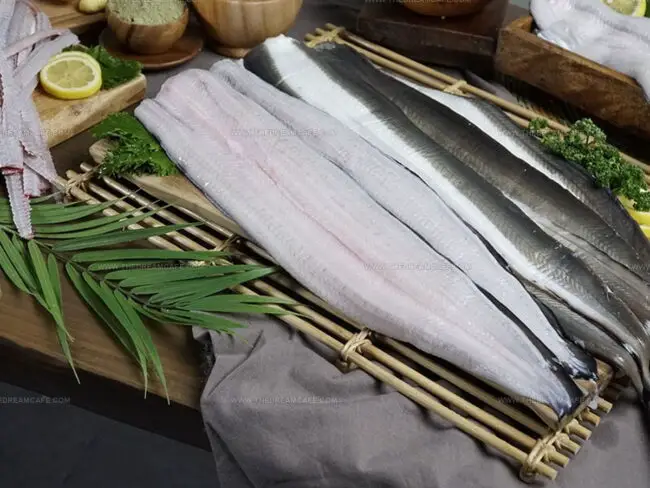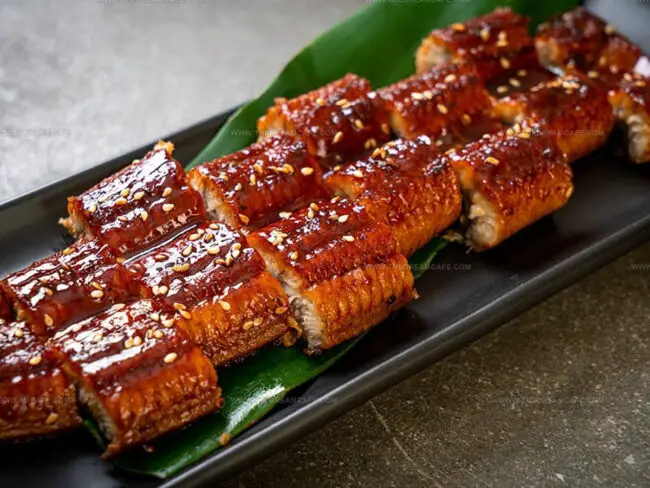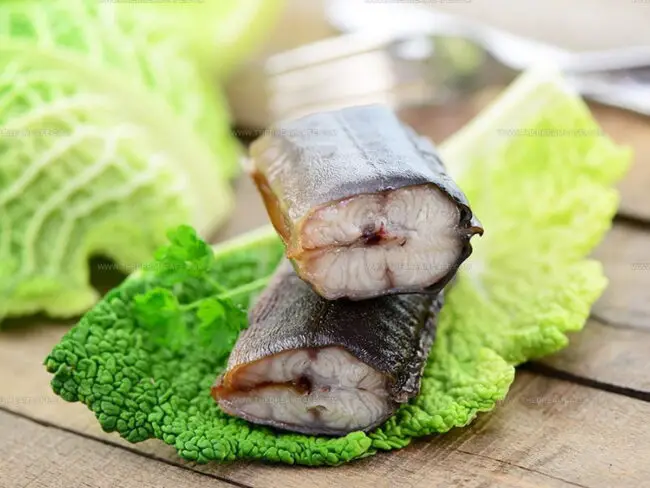What Does Eel Taste Like? Dive Into This Curious Seafood Flavor
Curious foodies often wonder about the mysterious flavor profile of eel, a delicacy that sparks intrigue in culinary circles.
This unique aquatic creature has captured the attention of seafood enthusiasts worldwide, promising a dining experience unlike any other.
Some cultures have long embraced eel as a prized ingredient, while others remain hesitant to take their first bite.
Seafood lovers seek to understand the nuanced characteristics that make eel a potentially remarkable meal.
Texture and preparation methods play crucial roles in transforming this slippery swimmer into a delectable dish.
Professional chefs and home cooks alike approach eel with a mix of excitement and culinary curiosity.
Unraveling the secrets behind eel's taste will provide insights into why this fish has become a beloved delicacy in various cuisines.
Are you ready to dive deep into the fascinating world of eel and its gastronomic potential?
Curious About Eel? Give It a Go!
Eels generally have a pleasant flavor, but there’s a small difference between the taste of freshwater eels and saltwater eels. While they do share some similarities, each type also has its own unique qualities, which we’ll explore more closely in the next section, keep scrolling to find out.
Eel or Snake? Let’s Clear It Up
Before diving into how eels taste, let’s go over some basic facts about them in the next two sections to give you a better understanding.
Eel Facts To Know
Slippery sea creatures might look like dangerous snakes, but they are actually fish. These ray-finned swimmers are safe for people to eat.
Eel colors range from dark gray to black with different patterns based on their home waters. Species vary widely, with lengths between 10 cm and 3 m, weighing up to 65 kg.
Water environments for eels include both salt and fresh waters. Ocean-dwelling types prefer shallow areas, while some species swim in deep seas.
People can find them hiding:
Body shapes make these swimmers unique. Most lack scales and move differently from typical fish.
Their long, flexible bodies allow backward swimming movements, which makes them quite special in underwater worlds.
Types Of Eel
Around 400 species of eels exist, but only 5 common types live in specific countries:
What Eel Really Tastes Like
Let’s get back to the main question, what does eel actually taste like? Is it mild, bold, or something surprisingly rich and flavorful?
To answer that, I’ll break it down by looking at the two main types based on where they live: freshwater eels and saltwater eels.
Flavor Of Freshwater Eel
Freshwater eels spark thoughts of delicious sushi rolls. People often wonder about their unique taste and texture.
Meaty eels offer a special eating experience with surprising flavors.
Doubters might say eels taste boring, but that's not true.
Their meat blends sweetness with a firm texture that delights the palate. Eel flavor reminds some people of raw salmon, squid, or lobster.
Richness comes from their natural oiliness.
Eating freshwater eels brings pure enjoyment.
Each bite delivers rich flavor with a slight toughness similar to lobster. White meat carries a mild fish taste that doesn't overwhelm.
Compared to saltwater eels, their flavor remains light and pleasant.
Flavor Of Saltwater Eel
Saltwater and freshwater eels share similar taste profiles, but subtle differences exist due to their unique physical characteristics.
Saltwater eels have thinner bodies with tougher meat and thicker skins.
Their texture feels more delicate compared to freshwater varieties. Flavor-wise, they are less rich but still pleasant.
Compared to freshwater eels, saltwater types offer a milder taste with a gentle sweetness. They also contain less oil, making them a lighter option for seafood lovers.
Comparison details can be seen in this helpful breakdown:
How to Cook Eel the Right Way
If you enjoy sushi, you might wonder why eel is always served cooked instead of raw like many other fish. The reason is simple, eel blood is toxic to humans and can be harmful if not handled properly.
That’s why it’s important to follow a few key preparation steps after buying eel from the market to make sure it’s safe for you and your family to eat.
Washing Eel
Dead eels need careful cleaning before cooking. Rinse them well under running water.
Soak eels for ten minutes to help remove dirt. Scrub their skin gently to remove scales.
Check carefully for any leftover blood spots. Blood from eels can make people sick, so clean them completely.
Remove Skin And Cut Eel
Eel skin comes with a slimy layer, making it super slippery. Removing the skin should happen quickly after the eel dies.
Steps for preparing eel:
World-Famous Dishes Made With Eel
Eel is a flavorful ingredient that sparks creativity in kitchens around the world, inspiring chefs to craft everything from comforting home meals to elegant fine-dining plates. It’s especially popular in Japanese cuisine, where a wide range of eel dishes are loved by many.
Let’s take a look at some delicious Japanese recipes and other standout eel dishes enjoyed in different cultures.
Grilled Eel Sushi Rolls
Sushi stands out as a well-known delicacy from Japan. Among various meat options, eels hold significant importance in sushi preparation.
Unagi refers to freshwater eels in Japanese, while Anago describes saltwater eels. Chefs typically grill both types for sushi dishes.
Sushi makers often pair these eels with avocado or cucumber to enhance taste profiles.
Eel Rice Bowl (Unadon)
Unadon brings together juicy freshwater eels and soft rice in a delightful meal. Seafood lovers enjoy this classic Japanese plate featuring grilled fish with special sauce.
Chefs carefully slice eels into neat square or thin pieces before cooking. Sweetened soy sauce coats each slice, creating a rich brown-orange color that makes people want to taste it right away.
Grilled Eel Kabayaki Style
Chefs skillfully prepare eel by slicing, taking out bones, and cooking over flames. Grilled eel fillets receive a special coating of unagi sauce, which gives the fish a rich, glossy look.
Eel sauce might sound like it comes from eels, but that's not true. Kitchen experts mix Japanese rice wine, soy sauce, and sugar to create this tasty sauce.
People enjoy drizzling it over eel dishes or using it as a dip to boost meal flavors. The sauce works well for many different eating styles, including vegan diets.
Jellied Eels
Eels served cold might sound strange to many people. England has a unique dish that might surprise you.
Jellied eels come from traditional English cooking. Chefs dice freshwater eels, boil them, and cool them until they form a wobbly jelly.
Some folks find this dish hard to eat and not very tasty. Other people believe jellied eels pack good health benefits, so they enjoy the meal without hesitation.
Green Herb Eel Dish
Belgium cooks boned eels slowly with garden herbs like basil, parsley, ginger mint, thyme, and chives. Cooks mix these herbs with butter and salt to create a rich flavor.
People enjoy paling int groen both cold and hot. Locals usually serve this dish with bread or crispy chips on the side.
Smoked Eel
Smoked eel sits as a tasty treat across several regions, with strong popularity in Australia and European nations. Eel has a special taste that feels both soft and strong.
People often enjoy smoked eel as a starter dish during meals.
Eel: Good for You or Not?
There are a few good reasons why trying eel dishes at least once is totally worth it, and if you haven’t considered it before, the points below might just change your mind:
Key Advantages
Eel offers several health perks for people:
Important Safety Tips
Some problems come with eating eels that people should know about.
Each 200 grams has 257 mg of cholesterol, which makes them bad for people watching their heart health.
People trying to lose weight might want to skip this fish.
Pregnant women, nursing moms, and small children need to be careful about eating this fish.
Is Eel Flavor Up Your Alley?
Eel brings a lot of health benefits when eaten the right way, and even though it might not look appealing at first, its rich and bold flavor leaves a lasting impression. The way eel tastes can also vary depending on the chef’s skill, as cooking it just right takes years of practice.
In Japan, eel is considered a signature dish, and with its nutritional value, it’s no surprise that the Japanese are known for their long life expectancy. So, what’s your take on eel?
Do you have a favorite eel dish? Feel free to leave a comment and share your thoughts, and pass this post along to help others learn more about the flavor and benefits of eel.

